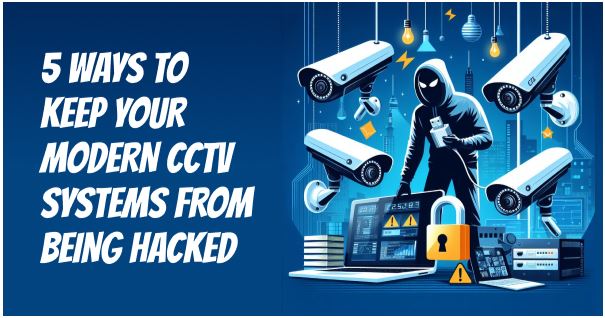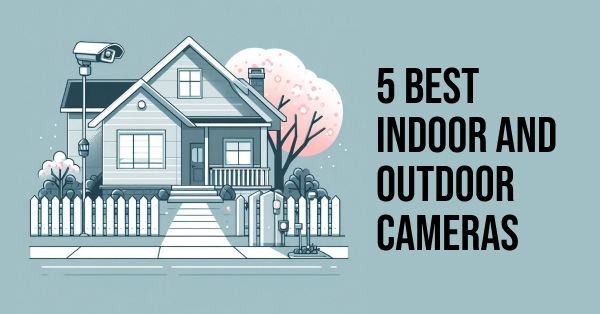
Protecting Your CCTV Systems from Hacking | Secure by CCTV
Learn effective strategies to safeguard modern CCTV systems from cyber threats. Ensure the security and privacy of your surveillance setup.
Introduction
For security reasons, modern CCTV systems are being used more often in a variety of locations, such as public areas, businesses, and residences. These cutting-edge surveillance systems offer features for remote access, better image quality, and increased monitoring capabilities. But in addition to their advantages, there might be risks and weaknesses that need to be taken care of. When it comes to CCTV systems, unauthorized access, hacking, and data breaches are serious issues. Cybercriminals could take advantage of software flaws in the system, shoddy passwords, or inadequate network security protocols. To protect the security and privacy of people and property under surveillance, it is critical to be aware of these risks and take preventative measures to secure CCTV systems.
Password and Access Management
One cannot stress how important it is to have strong and distinctive passwords for CCTV systems. The first line of protection against potential breaches and unauthorized access is these passwords. They contribute to the protection of private information, sensitive video, and system manipulation prevention. To make them more difficult to guess or break, strong passwords should be complex, containing a combination of capital and lowercase letters, numbers, and special characters. It is imperative to refrain from using passwords that are simple to figure out, like names or birthdays. For each CCTV system, a different password should be used in order to lower the possibility of accounts being compromised. Users can greatly improve the security of their CCTV systems by creating strong, one-of-a-kind passwords.
Regular Firmware Updates
Updating the firmware of CCTV systems is essential for improving security. The system’s overall performance is enhanced by these updates, which also fix bugs and errors. They address known vulnerabilities. Updating the firmware is essential to preserving the security posture of the system. Users should frequently check for updates via the system’s user interface or on the manufacturer’s website to make sure the firmware is current. To avoid any potential problems during the update process, it is imperative that you carefully read the instructions and follow them exactly before starting the update. One cannot stress the importance of updating firmware. They consist of security patches that fix known vulnerabilities as well as bug fixes that enhance the system’s stability and usability.
Hacking attempts, data breaches, and unauthorized access can all be avoided with the use of these patches. Users can be proactive in improving the security and integrity of their CCTV system by making sure the firmware is up to date.
Network Security Measures
In order to safeguard CCTV systems against potential threats and unauthorized access, network security is crucial. It’s critical to heed some advice in order to protect the network. First and foremost, Wi-Fi networks must be secured. This includes encrypting network traffic and preventing eavesdropping using robust encryption protocols like WPA2 or WPA3. Furthermore, altering the SSID and admin credentials of Wi-Fi networks can reduce the likelihood that hackers will take advantage of well-known default configurations.
Additionally, it is advised to separate the CCTV system on a different network or VLAN (Virtual Local Area Network), if at all possible. This division lessens the attack surface and potential impact of a breach by isolating the CCTV system from other networked devices.
It’s also crucial to update the firmware on networking devices like switches and routers on a regular basis. This reduces the possibility of exploitation by ensuring that security flaws are fixed.
Using firewall protection, creating strong and one-of-a-kind passwords for network devices, and routinely observing network traffic for any unusual activity are further steps that can be taken to improve network security and safeguard the CCTV system.
Users can greatly improve their network’s security posture and protect their CCTV systems from potential threats by taking these precautions.
Physical Security Precautions
Preventing unauthorized access to CCTV systems is largely dependent on physical security measures. CCTV cameras must be installed in safe, unhackable locations. The possibility of physical damage or tampering is reduced by putting cameras in hard-to-reach places. Another layer of security is to lock cabinets or enclosures containing wiring, DVRs, and NVRs. This keeps the equipment safe from theft or tampering by unauthorized individuals. It is imperative to guarantee that cabinets possess appropriate locks and are constructed from durable materials.
It’s also advised to routinely check the system for any indications of damage or tampering, such as loose cables or strange activity. Maintaining the integrity and dependability of the CCTV system requires prompt resolution of any physical security vulnerabilities. By putting these physical security measures in place, there is a much lower chance of illegal access or tampering, which guarantees the CCTV system operates safely and effectively.
Regular System Audits and Maintenance
CCTV systems must undergo routine audits in order to find vulnerabilities and guarantee the overall security of the system. Any potential flaws or security holes can be quickly found and fixed by performing routine audits. It is advised to take a methodical approach when performing a system audit. This entails carefully inspecting every part of the CCTV system, including the recorders, cameras, cables, and access controls. The audit should evaluate the integrity of the cabling infrastructure in addition to the cameras’ placement, functionality, and coverage.
The audit should also assess the system’s access controls and security settings. This entails checking password strength, examining user permissions, and making sure that only individuals with permission can access sensitive parts of the system.
It is crucial to address vulnerabilities or security gaps as soon as they are discovered. This could entail upgrading firmware or software, putting in place more robust access control procedures, or physically moving cameras. It is crucial to address vulnerabilities or security gaps as soon as they are discovered. This could entail upgrading firmware or software, putting in place more robust access control procedures, or physically moving cameras. Regular maintenance of cameras, cables, and other system components is strongly advised in addition to periodic audits. This includes inspecting cable connections, wiping off camera lenses, and updating firmware or software as necessary.
An important way to improve the CCTV system’s overall security posture is to stress the importance of routine maintenance and periodic audits. This guarantees that vulnerabilities are found and fixed quickly, improving the system’s efficiency and dependability.






